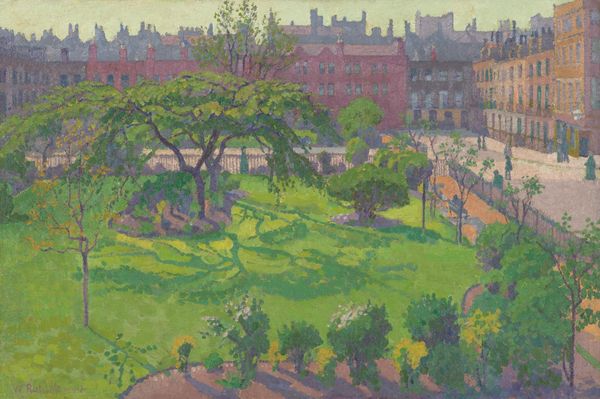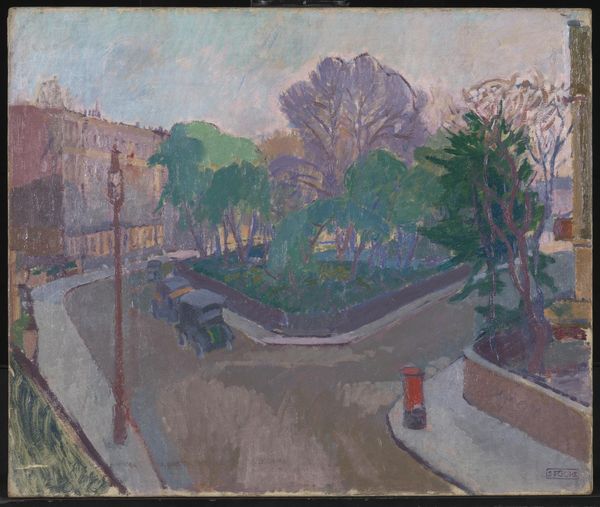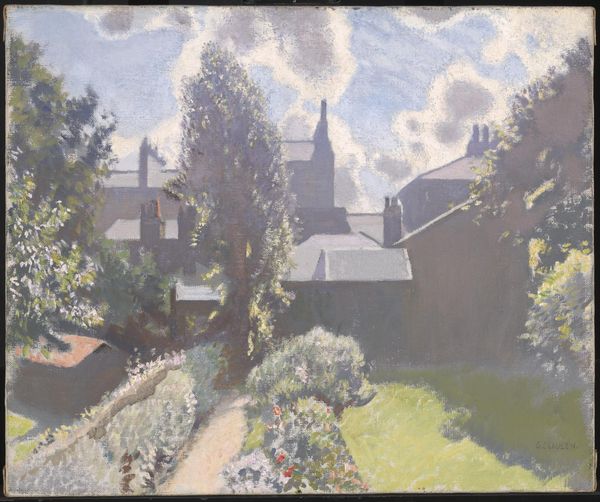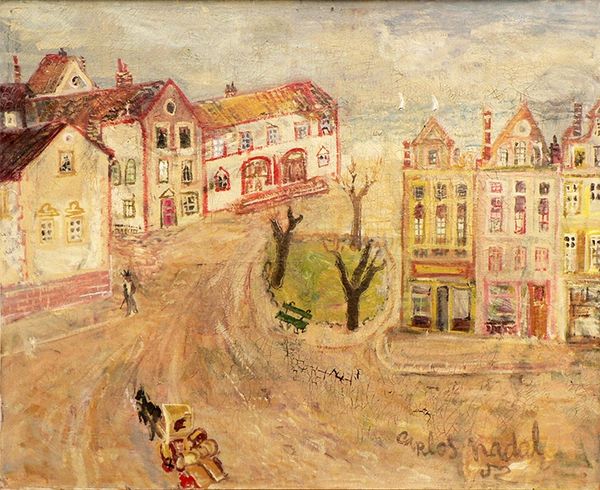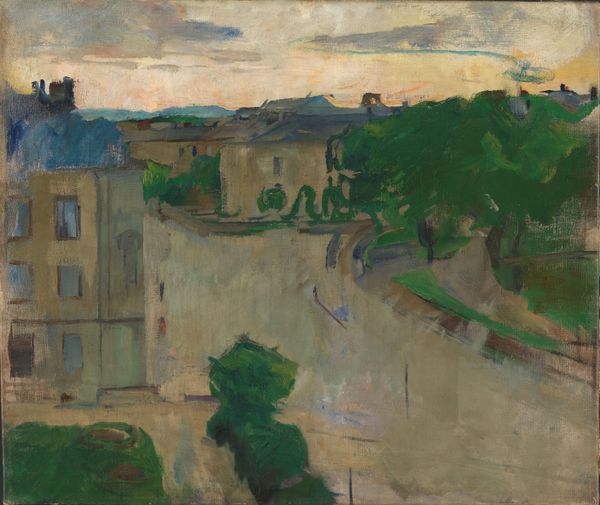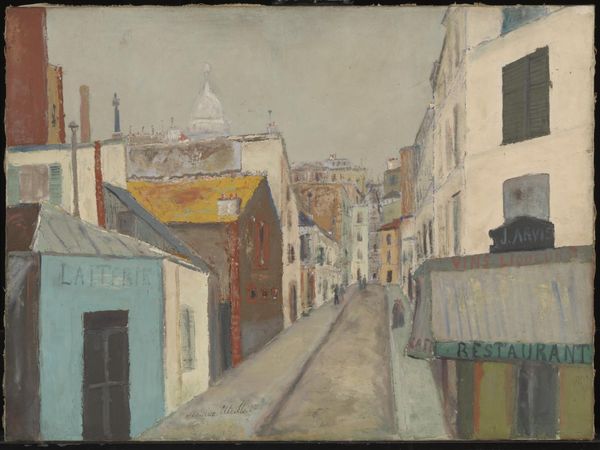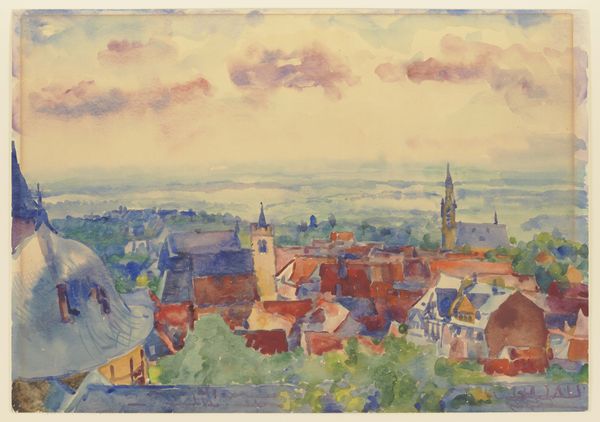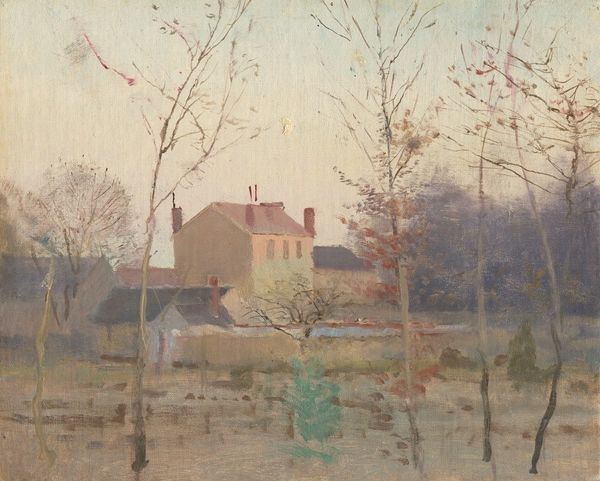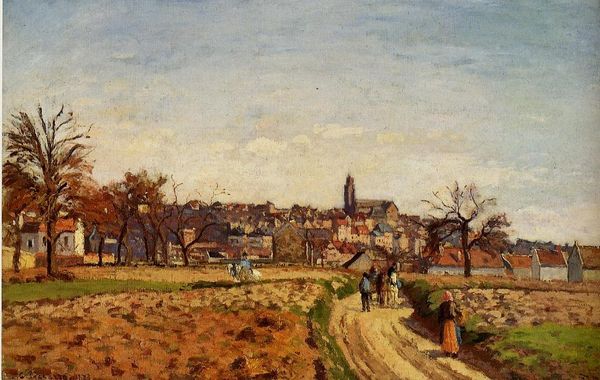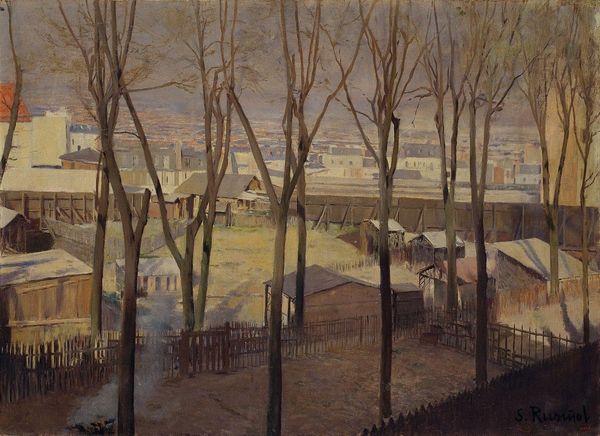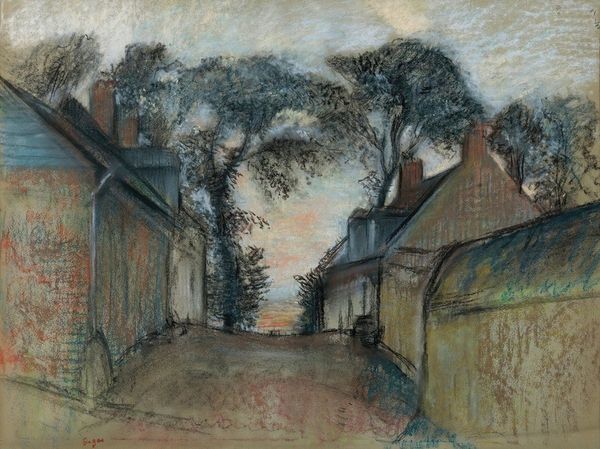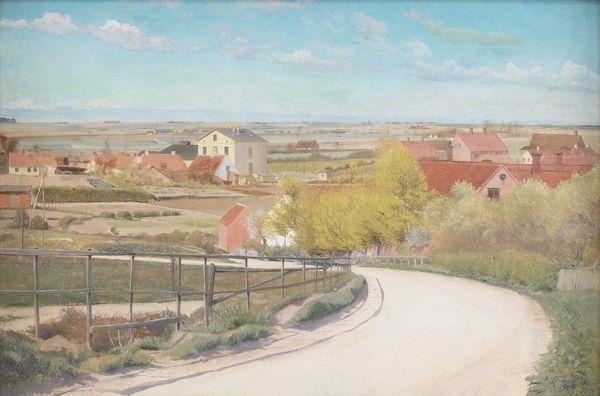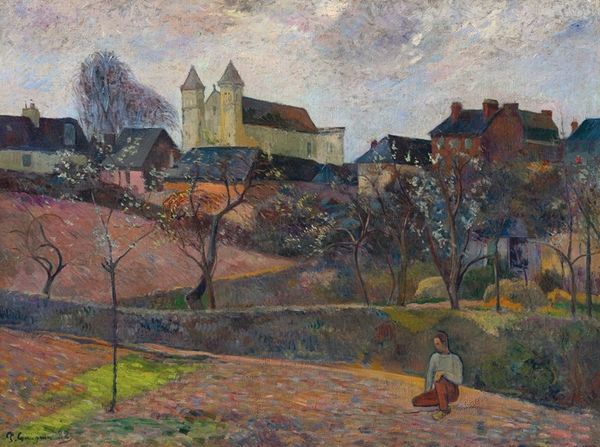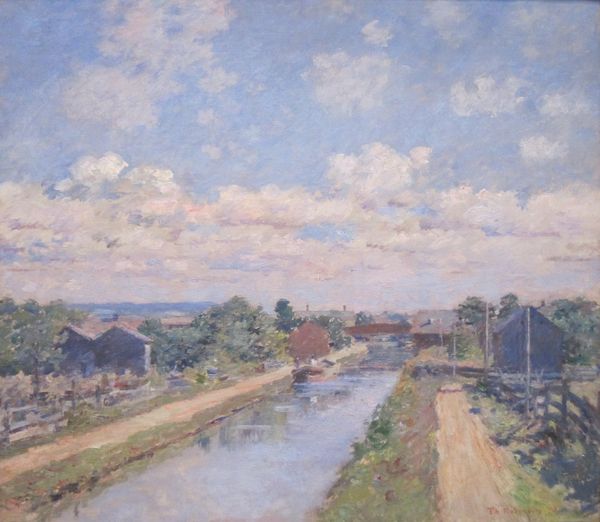
Dimensions: support: 510 x 763 mm
Copyright: © The estate of William Ratcliffe | CC-BY-NC-ND 4.0 DEED, Photo: Tate
Curator: This is William Ratcliffe’s “Hampstead Garden Suburb from Willifield Way,” held here at the Tate. Look at the delightful medium and size. Editor: It’s so... ordered. Almost oppressively neat. Everything in its place, a very particular vision. Curator: The composition evokes a utopian vision, echoing the Garden City movement’s ideals. The repetition of form signifies harmony, but also a lack of individuality, a shared cultural aspiration. Editor: But what about the chimneys, all puffing away? Doesn't that suggest a hidden chaos, a kind of cozy rebellion within the grid? Or am I just projecting my own anxieties about suburban life? Curator: Perhaps a bit of both. The chimney has long been a symbol of hearth and home, domesticity made visible. Even in a planned community, individual lives find a way. Editor: I suppose it is about balance, isn't it? Order and a touch of delightful, smoky disorder. Curator: Indeed. A perfect blend of aspiration and reality, frozen in paint.
Comments
tate 6 months ago
⋮
http://www.tate.org.uk/art/artworks/ratcliffe-hampstead-garden-suburb-from-willifield-way-t12260
Join the conversation
Join millions of artists and users on Artera today and experience the ultimate creative platform.
tate 6 months ago
⋮
The construction of public railways led to the growth of the suburbs as it became possible to commute from further afield. Ratcliffe lived in Hampstead Garden Suburb, a new development built in 1907 between Golders Green and East Finchley. It was devised by the philanthropist Mrs Henrietta Barnett, who bought a large amount of land and built residential areas for artisans, the middle classes and the more affluent. This view is from a tower that is part of the Hampstead Garden. Gallery label, February 2004
